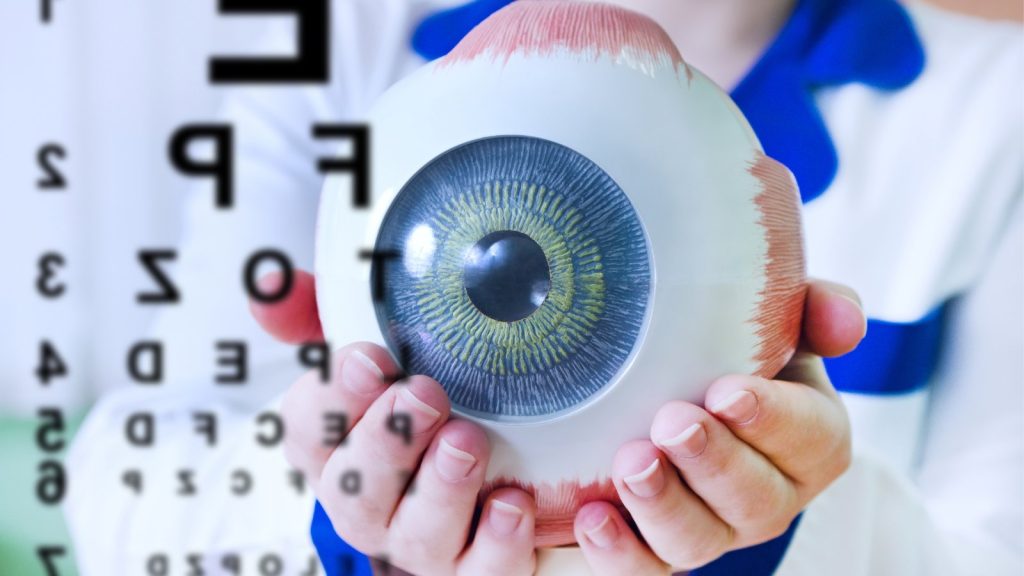Professional Glaucoma Service Near Me: Advanced Treatment Options
Professional Glaucoma Service Near Me: Advanced Treatment Options
Blog Article
The Role of Advanced Diagnostic Tools in Identifying Eye Disorders
In the world of ophthalmology, the utilization of innovative analysis tools has actually reinvented the very early identification and monitoring of various eye conditions. As the demand for precise and prompt diagnoses proceeds to expand, the combination of cutting-edge tools like optical coherence tomography and aesthetic field testing has actually become crucial in the world of eye care.
Significance of Very Early Medical Diagnosis
Early diagnosis plays a critical duty in the reliable management and treatment of eye disorders. Timely recognition of eye conditions is important as it enables punctual treatment, potentially stopping more progression of the illness and reducing long-term problems. By discovering eye disorders at a beginning, doctor can supply ideal therapy strategies tailored to the specific problem, eventually resulting in better results for clients. Furthermore, early medical diagnosis allows clients to accessibility needed assistance services and resources earlier, enhancing their overall lifestyle.
Modern Technology for Finding Glaucoma
Advanced analysis modern technologies play a vital role in the very early detection and surveillance of glaucoma, a leading root cause of permanent loss of sight worldwide. One such modern technology is optical coherence tomography (OCT), which gives in-depth cross-sectional pictures of the retina, allowing for the measurement of retinal nerve fiber layer density. This dimension is important in analyzing damages caused by glaucoma. One more innovative device is visual area screening, which maps the level of sensitivity of a client's aesthetic area, aiding to detect any areas of vision loss quality of glaucoma. In addition, tonometry is utilized to determine intraocular pressure, a major danger aspect for glaucoma. This examination is crucial as elevated intraocular pressure can lead to optic nerve damages. Furthermore, newer innovations like using fabricated knowledge formulas in examining imaging information are revealing promising cause the very early discovery of glaucoma. These advanced analysis devices allow eye doctors to detect glaucoma in its very early stages, permitting timely intervention and far better administration of the illness to avoid vision loss.
Function of Optical Comprehensibility Tomography

OCT's ability to quantify retinal nerve fiber layer density permits for specific and unbiased dimensions, assisting in the very early detection of glaucoma even before aesthetic field problems emerge. In addition, OCT modern technology allows longitudinal tracking of structural modifications in time, promoting tailored treatment plans and prompt interventions to help maintain individuals' vision. The non-invasive nature of OCT imaging likewise makes it a preferred selection for keeping an eye on glaucoma progression, as it can be duplicated on a regular basis without triggering discomfort to the client. On the whole, OCT plays an important function in boosting the diagnostic accuracy and monitoring of glaucoma, ultimately adding to much better outcomes for individuals at danger of vision loss.
Enhancing Diagnosis With Visual Field Testing
A vital element in detailed sensory examinations, aesthetic area testing plays a critical role in boosting the analysis procedure for different eye disorders. By assessing the complete degree of a client's visual area, this test provides crucial information concerning the practical honesty of the entire visual path, from the retina to the visual cortex.
Aesthetic field screening is specifically beneficial in the diagnosis and administration of problems such as glaucoma, optic nerve problems, and various neurological conditions that can impact vision. Via quantitative dimensions of peripheral and central vision, medical professionals can identify subtle modifications that might indicate the existence or development of these disorders, also prior to noticeable signs and symptoms happen.
Furthermore, aesthetic field screening allows for the tracking of therapy efficiency, helping eye doctors tailor healing treatments to specific patients. eyecare near me. By tracking changes in visual field performance with time, health care companies can make educated decisions about adjusting drugs, recommending surgical interventions, or carrying out other suitable steps to maintain or improve a patient's aesthetic function
Managing Macular Degeneration

Final Thought
In verdict, progressed diagnostic devices play a critical function in identifying eye problems early on. Technologies such as Optical Coherence Tomography eyecare near me and aesthetic field screening have greatly enhanced the precision and effectiveness of detecting conditions like glaucoma and macular deterioration.
Report this page